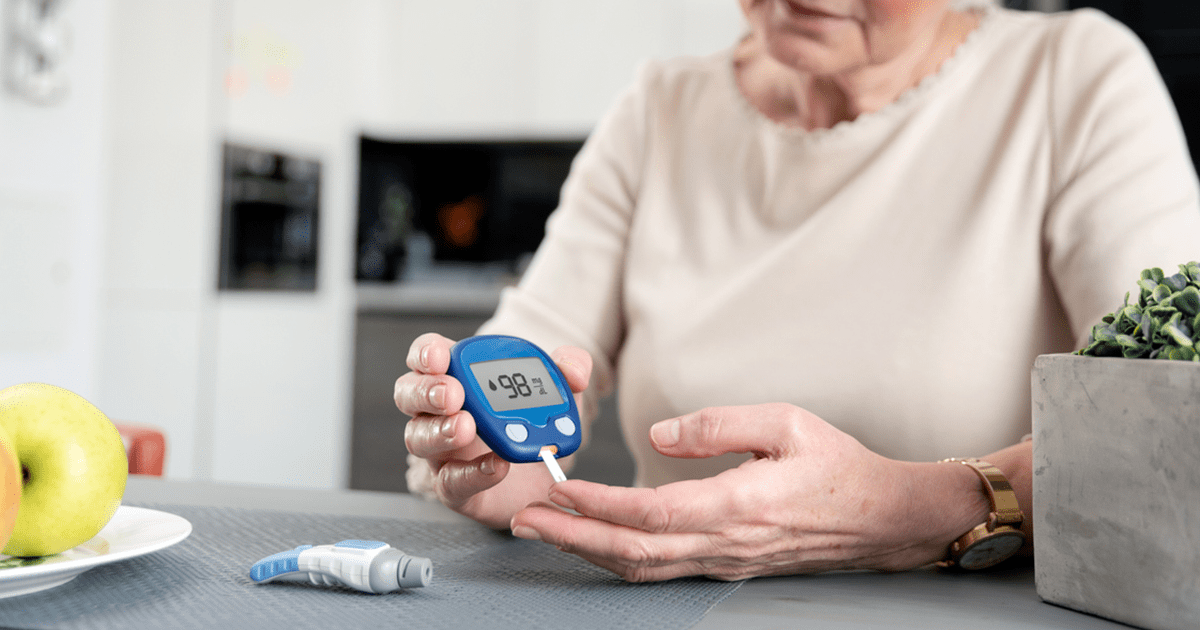An entrepreneur at heart, Chris has been building and writing in consumer life insurance and health for over 11 years. He's contributed to 1,000+ medical, health, financial and wellness articles and product reviews written in the last 11 years.In addition to Pharmacists.org, Chris and his Acme Health LLC Brand Team own and operate Diabetic.org, PregnancyResource.org, Multivitamin.org, and the USA Rx Pharmacy Discount Card powered by Pharmacists.org.Chris has a CFA (Chartered Financial Analyst) designation and is a proud member of the American Medical Writer’s Association (AMWA), the International Society for Medical Publication Professionals (ISMPP), the National Association of Science Writers (NASW), the Council of Science Editors, the Author’s Guild, and the Editorial Freelance Association (EFA).
Ways to Reduce Insulin Costs for Senior Citizens
Diabetes365 ≫ Ways to Reduce Insulin Costs for Senior Citizens
SHARE
Written By

Tess DiNapoli
Fact Checked By

Chris Riley
Diabetes 365 follows very strict guidelines for accuracy and integrity on all content.
To learn about Diabetes 365 commitment to transparency and integrity, read our Editorial Disclosure
Last Updated on April 15, 2025
It’s easy for expenses to add up for senior citizens. Between regular costs of living and healthcare, the fees can feel like too much of a burden. Many of these items or services are necessary for survival, and insulin most definitely falls into that category. Insulin can be very expensive, but there are possibilities for reducing the monthly costs associated with the drug. Here are some ways to reduce insulin costs for senior citizens.

Quick Article Guide
Here’s what we’ll cover in this post:
Use the Medicare Part D Senior Savings Model if You Qualify
Beginning January 1, 2021, the Medicare Part D Senior Savings Model is the best way for qualifying seniors to reduce their insulin costs. Model-participating plans will separate insulin from other charges so that an insulin prescription is not subject to a deductible or any increases in a coverage gap. This model limits the cost of insulin to $35 for a 30-day supply as the maximum. Using this model, qualifying seniors save an average of $446 in annual out-of-pocket costs for insulin.
Not every health plan is covered, and not every senior citizen qualifies for this particular savings model. However, there are still plenty of other options that could be available depending on your own circumstances. According to the CMS, more than 1,750 Medicare Part D prescription drug plans and Medicare Advantage Plans have been filed so far. The open enrollment period goes through Dec. 7, so it’s definitely worth checking to see if a plan in your coverage area will offer the new price to you.
It’s good to keep in mind that there are many different types of insulin, and this is a very relevant factor when determining the qualifications and applicability of the Medicare Part 2 Senior Savings Model. You may be able to find a participating plan that fits your needs, but that doesn’t mean it will work. You have to make sure that the type of insulin you are currently prescribed is one that the plan will cover. Otherwise, the senior savings model won’t be compatible with the current plan that you are under. If not, that’s ok, there are still plenty of options available to help you decrease the cost of the medication.

Shop Around
Insulin is an important and expensive medication that you should shop around for. Don’t automatically go with the first option you see when looking for a source for insulin; instead, do your homework to determine the most cost-effective solution for you. You can use apps and websites to compare prices, look for coupons, and see whether physical or online drugstores could give you a better deal.
There are a variety of resources to help you find the best source for your insulin needs. There isn’t a one-size-fits-all solution, unfortunately, but that doesn’t mean there aren’t options that can fit your needs and budget. The American Diabetes Association has compiled a comprehensive list of insulin help resources.
In order to effectively shop around, there are certain details that will prove vital to your research. Make sure you are clear on the following bits of information.
- Your accurate monthly income
- There is support available for all income levels, but certain thresholds are in place for most of the resources, so you’ll need to know where your income falls each month.
- Your pharmacy prescription
- Your active prescription, including location, amount, and frequency, is going to be relevant in your search.
- Your insurance type
- Private and commercial insurances have different options.
- Method of insulin administration
- Getting insulin via pen vs. a pump, syringe, or inhalation will all have different price points. You need to know what type of insulin delivery method you’re going to be using in order to find the insulin that’s best for you.
Consider Each Aspect of the Supply Chain
Like many products and services, insulin goes through many steps in the supply chain before it is available to purchase. It is worth exploring each aspect of the supply chain to see where you could save costs. According to Web MD, here are a few aspects to consider:
- Check with your doctor: What options do you have for different insulin types you could take? Do you have access to samples?
- Check with your healthcare provider: What’s the copay for each type of insulin? Could you switch to a cheaper one?
- Check directly with the manufacturer: What financial help do you qualify for? What kinds of deals can the manufacturer make that the distributors can’t?
Carrying out the research and verifying all of your options takes a lot of effort, but it can be worth it financially. Hopefully a little bit of effort on your part can lead to money saving opportunities.

Look Into Assistance Programs
There are a variety of programs available to assist seniors with getting insulin that aren’t tied to Medicare Part D. You may be able to qualify for a patient assistance program and not be aware. Partnership for Prescription Assistance is an example of a program that’s fairly easy to look into. Keep in mind that there could also be local options for getting insulin at reduced costs.
Co-pay cards can be a great way to get insulin that’s a bit less expensive. Similarly, discount drug cards are another possible source of assistance, but using one of these cards often comes at the cost of giving out your personal information, which, in turn, makes certain pieces of your information easier to access by other medical institutions. You’ll need to weigh your options to determine what makes the most sense for you and your circumstances.
What Works for You
Getting insulin is essential for many seniors so it’s absolutely vital to consider all of your options and what channels you go through to obtain it. Though it could seem like a money-saver to take fewer insulin dosages than prescribed, it is never recommended to go down that path. Plus, taking fewer doses than what you are prescribed could cause even more costly health problems later on in life. Don’t delay your refills, either. There are plenty of ways to save money on insulin while still taking the correct doses of your medicine.

Don’t feel like you have to make all of the decisions without any support. Depending on your insurance, you may have outside resources available to you. Your doctor can also help provide recommendations. When you consider each factor as you shop around and look into assistance programs, your insulin costs can dramatically decrease without taking less insulin or having to seek out lower quality medication.

Tess DiNapoli
Tess DiNapoli is an artist, freelance writer, and content strategist. She’s been featured in Trend Hunter, The Budget Savvy Bride, Pinstripe Magazine, JustLuxe, The Daily Californian, Green Entrepreneur, What Mobile, Home Accents Today, Sunday Edit, Longevity and more.